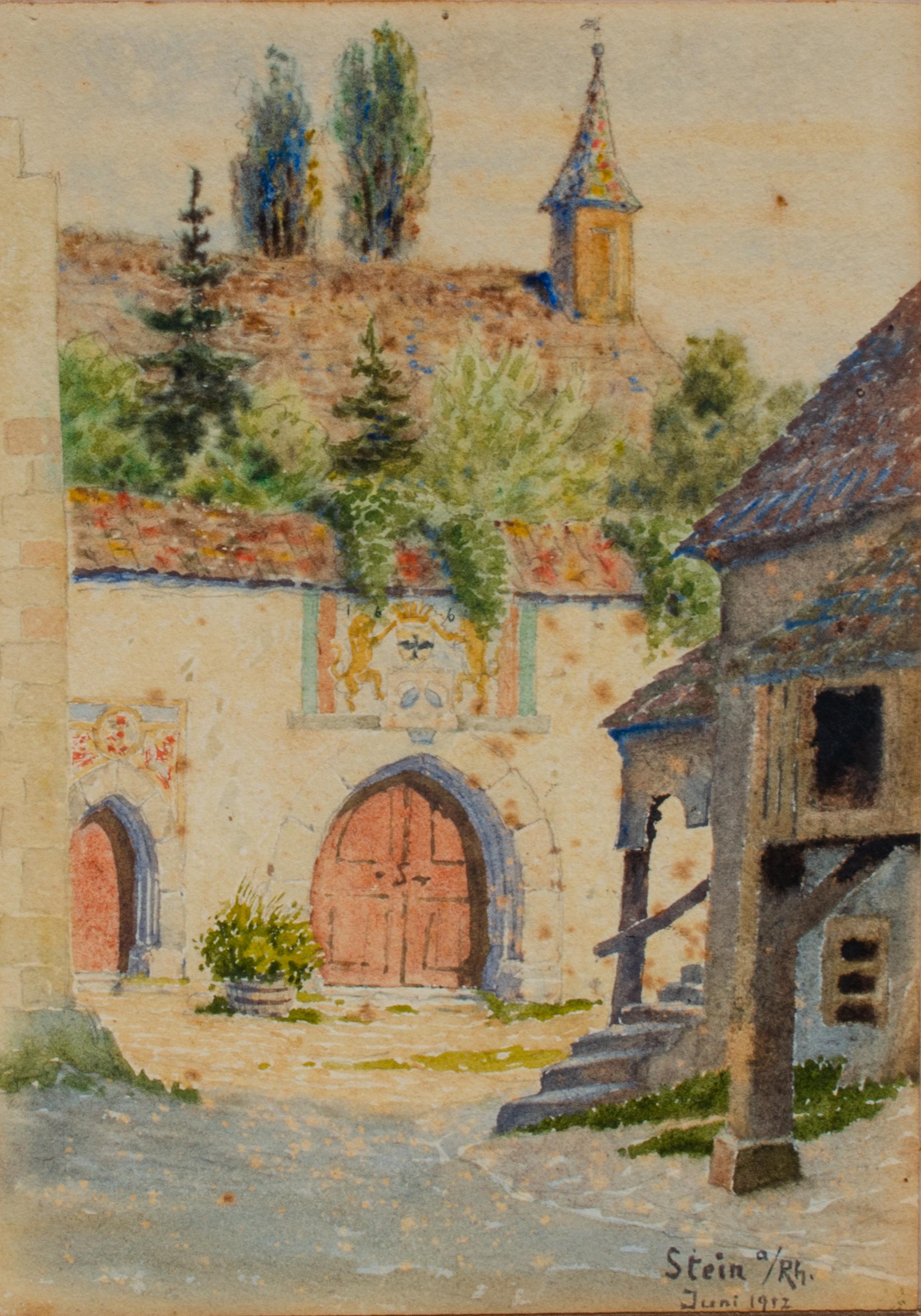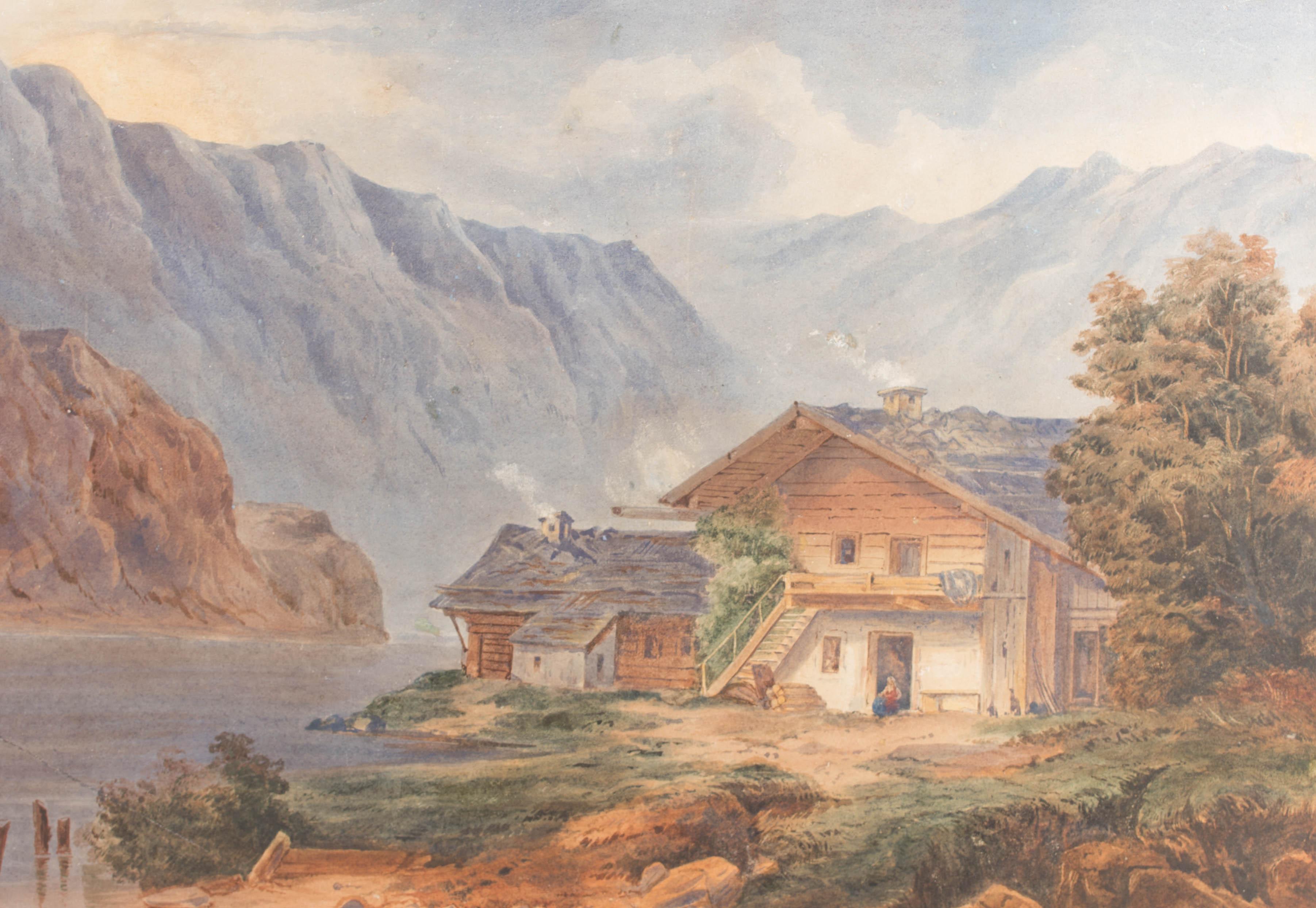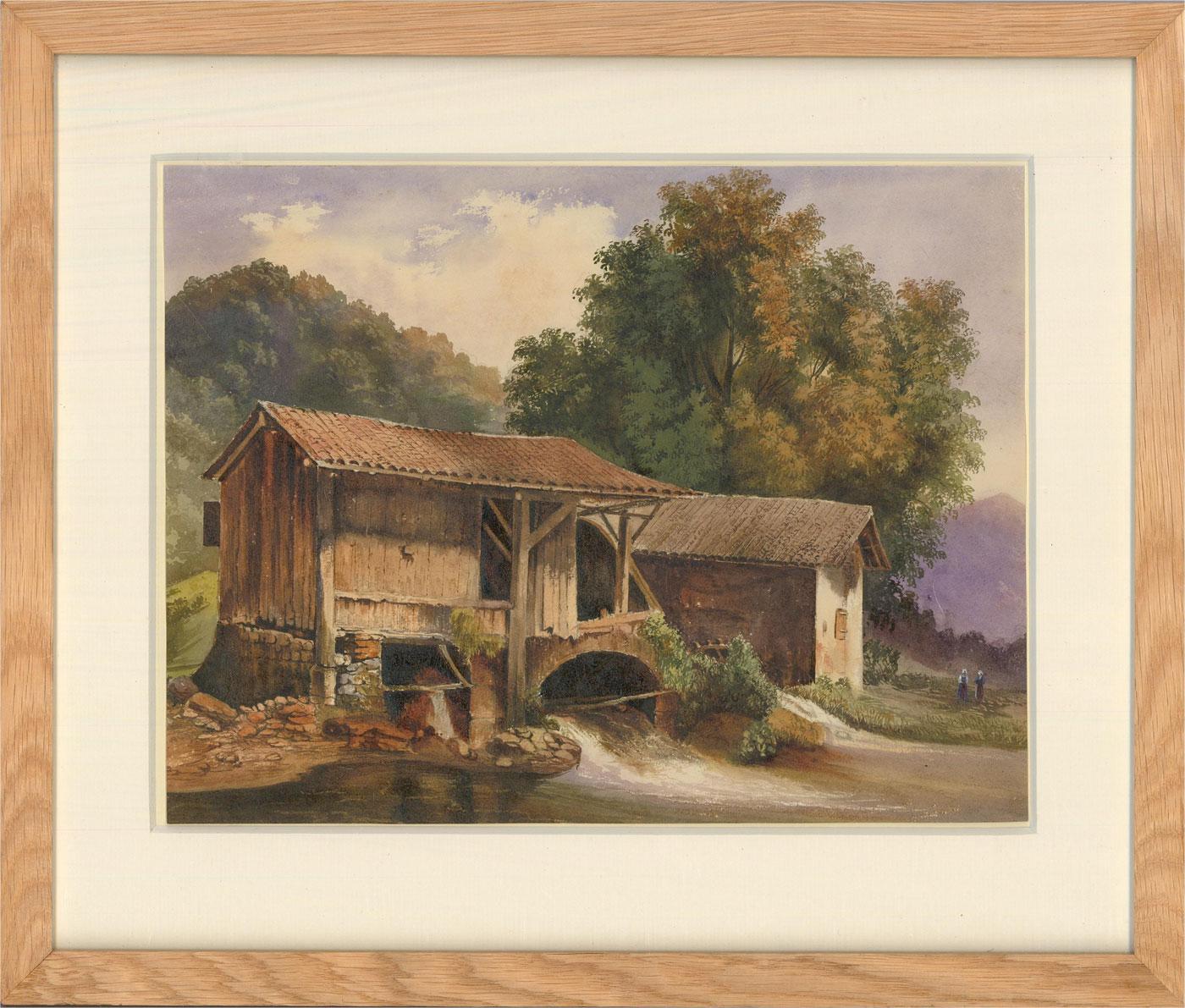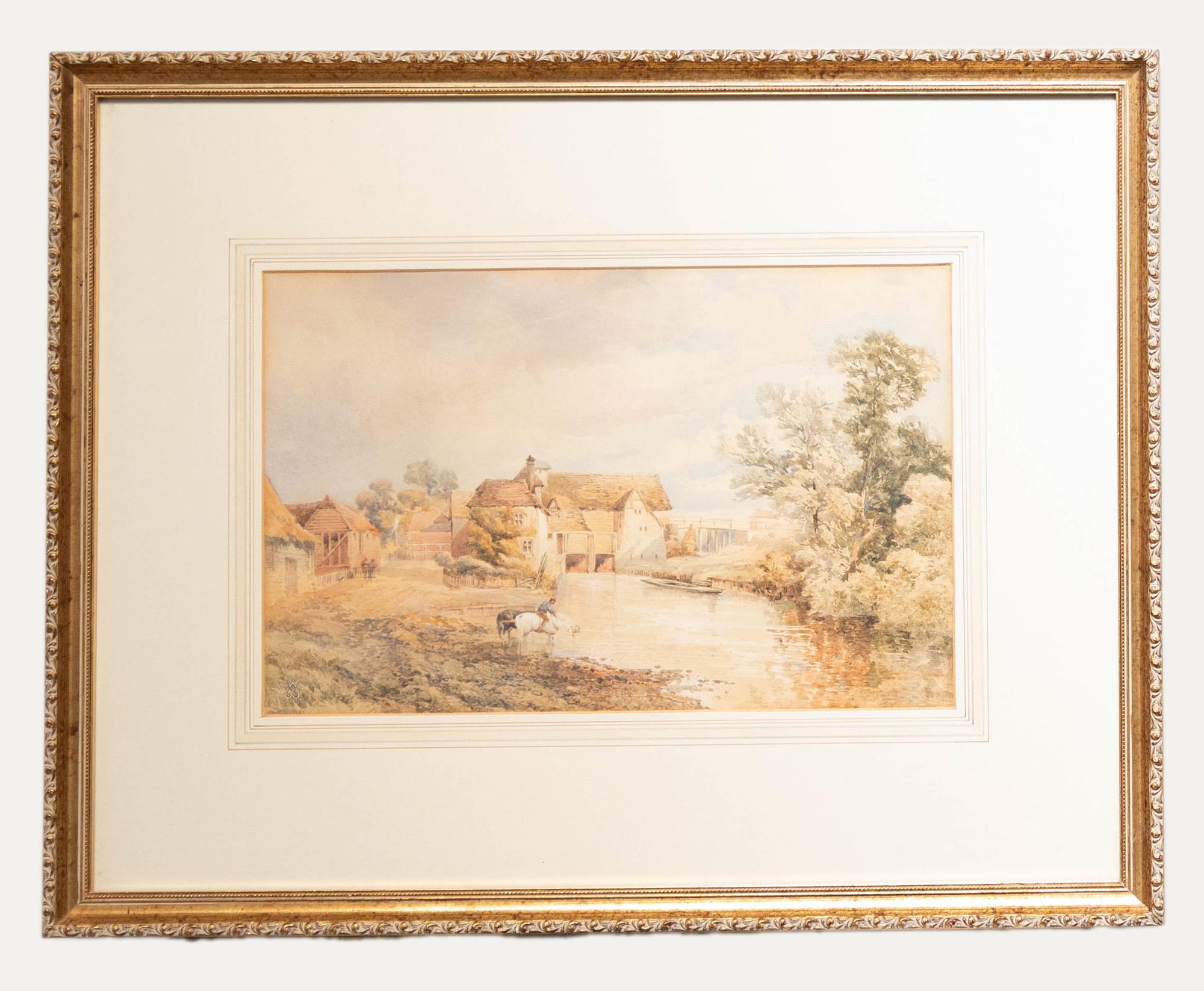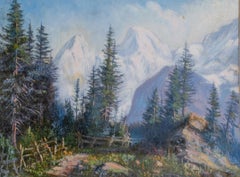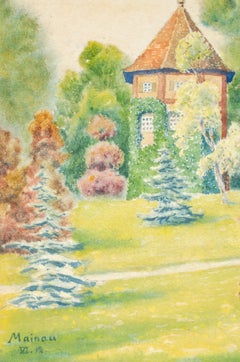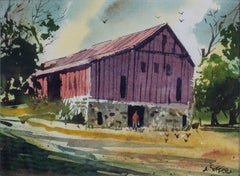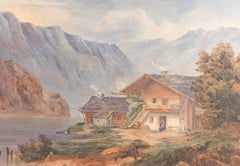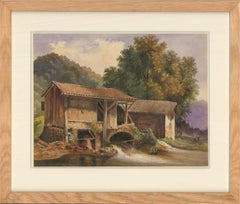Items Similar to Vibrant German Watercolor of a Mill, 19th Century
Want more images or videos?
Request additional images or videos from the seller
1 of 5
UnknownVibrant German Watercolor of a Mill, 19th Century19th Century
19th Century
$300
£225.37
€259.89
CA$416.29
A$462.59
CHF 242.40
MX$5,672.83
NOK 3,091.69
SEK 2,908.55
DKK 1,939.68
Shipping
Retrieving quote...The 1stDibs Promise:
Authenticity Guarantee,
Money-Back Guarantee,
24-Hour Cancellation
About the Item
Untitled (Mill), 19th Century
Watercolor on paper
5 x 7 in.
Mat: 8 x 10 in.
Partial inscription verso
- Creation Year:19th Century
- Dimensions:Height: 8 in (20.32 cm)Width: 10 in (25.4 cm)
- Medium:
- Movement & Style:
- Period:
- Condition:Crack in top of painting, likely needs conservation.
- Gallery Location:New York, NY
- Reference Number:1stDibs: LU2211212632702
About the Seller
5.0
Platinum Seller
Premium sellers with a 4.7+ rating and 24-hour response times
1stDibs seller since 2022
80 sales on 1stDibs
Typical response time: 2 hours
- ShippingRetrieving quote...Shipping from: New York, NY
- Return Policy
Authenticity Guarantee
In the unlikely event there’s an issue with an item’s authenticity, contact us within 1 year for a full refund. DetailsMoney-Back Guarantee
If your item is not as described, is damaged in transit, or does not arrive, contact us within 7 days for a full refund. Details24-Hour Cancellation
You have a 24-hour grace period in which to reconsider your purchase, with no questions asked.Vetted Professional Sellers
Our world-class sellers must adhere to strict standards for service and quality, maintaining the integrity of our listings.Price-Match Guarantee
If you find that a seller listed the same item for a lower price elsewhere, we’ll match it.Trusted Global Delivery
Our best-in-class carrier network provides specialized shipping options worldwide, including custom delivery.More From This Seller
View AllStein am Rhine, 1912 German Watercolor
Located in New York, NY
Stein am Rhine, 1912
Watercolor on paper
7 x 5 in.
Mat: 10 3/4 x 8 3/4 in.
Inscribed lower right: Stein a/Rh, Juni 1912
At the point where Lake Constance again becomes the Rhine River, you will find the little town...
Category
1910s Impressionist Landscape Drawings and Watercolors
Materials
Paper, Watercolor
c. 1900 German Watercolor of a Mountainside Trail
Located in New York, NY
Untitled (Mountainside Trail), c. 1900
Watercolor on paper
6 1/8 x 7 3/4 in.
Mat: 8 x 10 in.
Category
Early 1900s Impressionist Landscape Drawings and Watercolors
Materials
Paper, Watercolor
Flower Island of Mainau Watercolor, 19th Century
Located in New York, NY
Mainau, 19th Century
Watercolor on paper
7 1/4 x 5 1/8 in.
Mat: 11 x 8 3/4 in.
Inscribed lower left: Mainau IV.12
Inscription verso
Mainau is an island in Lake Constance (on the Sou...
Category
19th Century Impressionist Landscape Drawings and Watercolors
Materials
Paper, Watercolor
Countryside Barn Watercolor by Abraham Soffer
Located in New York, NY
Abraham Soffer (American, 1922-2004)
Untitled, c. 21st Century
Watercolor on paper
Sight: 6 3/4 x 9 1/2 in.
Framed: 11 3/4 x 14 3/4 x 3/4 in.
Signed lower right: A. Soffer
Abraham S...
Category
21st Century and Contemporary Contemporary Landscape Paintings
Materials
Watercolor
Countryside Farmette Painting by Mystery European Artist
Located in New York, NY
Mystery European Artist
Untitled (Countryside Farmette), c. 1880
Oil on canvas
12 x 10 in.
Framed: 16 x 13 1/2 x 1 1/2 in.
Category
19th Century Impressionist Landscape Paintings
Materials
Canvas, Oil
Vermont Farmhouse Painting by Henry Thomas Clark
Located in New York, NY
Henry Thomas Clark (American, 1929-2000)
Untitled, 20th Century
Oil on canvas
16 x 18 1/8 in.
Framed: 21 x 23 x 1 3/8 in.
Signed lower left: Clark
Category
20th Century American Impressionist Landscape Paintings
Materials
Canvas, Oil
You May Also Like
Mid 19th Century Watercolour - The Little Wooden Cottage
Located in Corsham, GB
A very fine 19th century watercolour landscape depicting a quaint cottage beside a lake with distant mountains in the distance. The artist is clearly proficient in the medium and has...
Category
19th Century Landscape Drawings and Watercolors
Materials
Watercolor
$359 Sale Price
20% Off
Mid 19th Century Watercolour, An Overshot Mill
Located in Corsham, GB
This accomplished watercolour study depicts an old stone water mill on the verge of a woodland river. Unsigned. Presented in a wooden frame with a slim gilt slip and a washline mount...
Category
Mid-19th Century Landscape Drawings and Watercolors
Materials
Watercolor
$545 Sale Price
20% Off
Follower of Simeon Fort (1793-1861) - Framed Watercolour, Alpine Mill House
Located in Corsham, GB
A crisp and vibrant watercolor study of a riverside mill house, with two female workers conversing in a distant field. The rustic characteristics of the...
Category
Mid-19th Century Landscape Drawings and Watercolors
Materials
Watercolor
Antique Landscape Watercolor - Mill House Water Wheel
Located in Houston, TX
Vivid early 19th century French watercolor painting of mill house water wheel , 1876. Signed and dated lower left.
Original artwork on paper displayed o...
Category
1870s Landscape Drawings and Watercolors
Materials
Watercolor
W. S. S. - 19th Century Watercolour, Farm by the Stream
Located in Corsham, GB
Signed with a monogram W. W. S. to the lower left. Well presented in a decorative gilt frame and wash line mount. On paper.
Category
19th Century Landscape Drawings and Watercolors
Materials
Watercolor
$188 Sale Price
20% Off
Mid 19th Century European School "Rustic Mill" Original Oil Painting c.1850
Located in San Francisco, CA
Mid 19th Century European School "Rustic Mill" Original Oil Painting c.1850
A lumber mill in an alpine setting
Original oil painting - No visible signature
The canvas appears to h...
Category
Mid-19th Century Impressionist Landscape Paintings
Materials
Canvas, Oil
